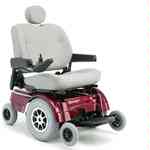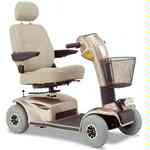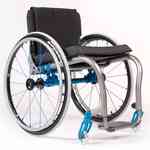The final report of the Anthropometry of Wheeled Mobility Project was issued recently. A project of The Center for Inclusive Design and Environmental Access (IDeA) of the School of Architecture and Planning of the University of Buffalo, and supported in part by the U.S. Access Board, this deep dive into the current state of Wheeled Mobility Device (WhMD) users collected detailed measurements on just under 500 users. It found that wheelers and their rides are much more diverse than originally assumed. Access Board announcement here.
- Ultra-lightweight rigid frame wheelchair
This report provides a valuable glimpse into the change over time in the Durable Medical Equipment market. Research on the average size, shape, and maneuverability of wheelers was last studied over 30 years ago, when wheelchairs were largely purchased from one standard manufacturer and didn’t vary much. (For you wheelers out there – how many of you remember Everest & Jennings?) Wheelchairs available now and popular with users and medical specifiers range in shape and size and may use human power or batteries. Power wheelchairs now come in front, rear or middle-wheel drive with tilt’n space seating and extended footrest options. And don’t forget scooters, in three or four-wheel versions with tiller drive. To complicate matters, many wheelers carry equipment or personal belongings on their ‘chairs that extend their footprint or reduce their ability to interact with their environment.
The report confirms for me what I’ve begun to see amongst my Personalized Spaces clients – that many folks need more room to maneuver in the built environment than just meeting the standard clear floor space provided by Code. Best practices lead me to encourage my design community clients to go beyond the minimums to accommodate more users of wheeled mobility devices.
Selected key findings of the research are (renumbered from report original):
1. Diversity: There are often large differences in the body and chair sizes and in the functional abilities of manual chair, power chair and scooter users, and men and women.
2. Reference WhMD: The U.S. standard reference wheelchair does not represent the sizes of unoccupied wheelchairs in our sample well. Contemporary wheeled mobility devices are much more diverse in size and features than the reference wheelchair.
3. Clear floor space: A large minority of participants in our research would not be accommodated by the current U.S. standard for clear floor space, especially for length. The people excluded include those who use any of the three types of WhMD. Other countries have already increased the clear floor space used in their standards.
4. Knee and toe clearances: The current U.S. standards for knee and toe clearances do not accommodate a majority of participants in our sample.
5.Maneuvering clearances: A significant proportion of WhMD users, scooter users in particular, are not accommodated by current maneuvering clearances in U.S. standards, although the proportion differs for different clearances. In particular, the current standards do not accommodate most of our sample for completing a 360-degree turn. There are also a small number of participants in all categories who require much larger clearances than current standards provide.
6. Reaching ability: A significant percentage of WhMD users have very limited functional reaching abilities.
7. Reach limits: A majority of WhMD users cannot complete a forward reach to the minimum forward reach height in U.S. standards on a vertical plane in front of their anterior most point (toes or device). The current high side reach limit accommodates WhMD users. The low reach limit, as defined, is currently inappropriate for safety reasons.




Leave A Comment